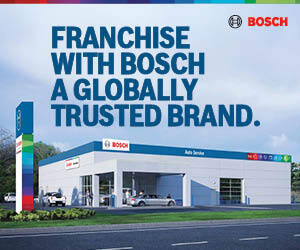How to Successfully Foster a Safe and Efficient Workplace Culture

As workplaces evolve and adapt to modern sensibilities, the importance of safety and efficiency becomes even more pronounced. Today’s workplace leaders are just as invested in boosting employee morale and safeguarding retention as in building a successful business or growing a franchise operation. Recent workplace changes, such as the rise in remote work, an emphasis on team diversity, and shifting societal expectations have emphasized the importance of a sound workplace culture.
Today’s leaders are finding innovative ways to foster the work culture that employees currently seek. Through tested strategies and best practices, the safe and efficient work culture that allows employees to thrive and businesses to grow can be achieved.
Creating safe workspaces
Safety within the workplace — both physical and mental or emotional — should be a given. However, without strong leadership and a robust mission that supports the importance of safety, it can be a factor that sometimes falls by the wayside. Here are some ways leaders can help foster a workplace culture promoting safety.
- Create a clear mission and guidelines: Leaders must establish a clear mission surrounding the idea of safety. Safety should be one of the organization’s most closely held core values.
- Create policies and procedures: Policies and procedures for tasks should always keep employee safety in mind. Employees at every level should be given access to training on safe procedures and practices.
- Open communication and resources: The core value of safety should also tap into employees' mental and emotional safety. Leaders should foster a culture of open communication and provide resources for mental health care, such as comprehensive health plans and awareness training. By doing so, employees can better understand the importance of their emotional health in the workplace and that of their fellow team members.
Creating an efficient workplace
When other important core values are in place — such as safety and support — efficiency can often follow naturally. Here are some ways leaders can foster efficiency in the workplace.
- Clear goals and expectations: If employees know what they are working toward day in and day out and have clear expectations of how that work should be done, they are more likely to be efficient.
- Lead by example: This is also a value where leading by example is paramount. Leaders should expect efficiency from themselves as much as they expect from their employees.
- Review processes, procedures, and resource allocation: To make efficiency an achievable goal, leaders should regularly review processes to create streamlined workflows and better resource allocation. For employees to be efficient, they need to have the tools available to them to best complete their tasks. This can sometimes mean integrating technology, including automation or AI, into processes.
- Reward efficiency: Efficient workplaces can thrive when efficiency is not just an expectation but is recognized and rewarded. Leaders should highlight employees who find efficient ways to complete tasks and who adapt to innovative workplace practices with ease. This recognition will help solidify efficiency in the workplace culture.
- Teamwork and collaboration: Efficiency cannot become a core value without the expectation of teamwork and collaboration. Through robust leadership and comprehensive training, employees can learn to work together effectively, improving efficiency within the organization.
Commitment and support
Workplace changes and cultural shifts can only happen with the support of key leaders within an organization. These leaders are the source of culture establishment and the driving force behind a culture taking shape and becoming woven into the organization from every angle. Leaders need to not only stand behind the idea of culture establishment within organizations, but they need to provide the necessary tools, time, and resources to achieve these changes and allow them to stick.
All long-lasting cultural changes within a workplace begin with leaders setting positive examples for their teams. When expectations are clear, and the leaders take aspects of culture such as safety and efficiency seriously, the team members will follow suit, realizing the importance of the organization’s mission to the success of the business and their own job satisfaction.
Nick Padlo is the Founder & CEO of Sophros Recovery.
Share this Feature
Recommended Reading:
| ADVERTISE | SPONSORED CONTENT |
FRANCHISE TOPICS
- Multi-Unit Franchising
- Get Started in Franchising
- Franchise Growth
- Franchise Operations
- Open New Units
- Franchise Leadership
- Franchise Marketing
- Technology
- Franchise Law
- Franchise Awards
- Franchise Rankings
- Franchise Trends
- Franchise Development
- Featured Franchise Stories
| ADVERTISE | SPONSORED CONTENT |

$500,000
$350,000





 The multi-unit franchise opportunities listed above are not related to or endorsed by Multi-Unit Franchisee or Franchise Update Media Group. We are not engaged in, supporting, or endorsing any specific franchise, business opportunity, company or individual. No statement in this site is to be construed as a recommendation. We encourage prospective franchise buyers to perform extensive due diligence when considering a franchise opportunity.
The multi-unit franchise opportunities listed above are not related to or endorsed by Multi-Unit Franchisee or Franchise Update Media Group. We are not engaged in, supporting, or endorsing any specific franchise, business opportunity, company or individual. No statement in this site is to be construed as a recommendation. We encourage prospective franchise buyers to perform extensive due diligence when considering a franchise opportunity.